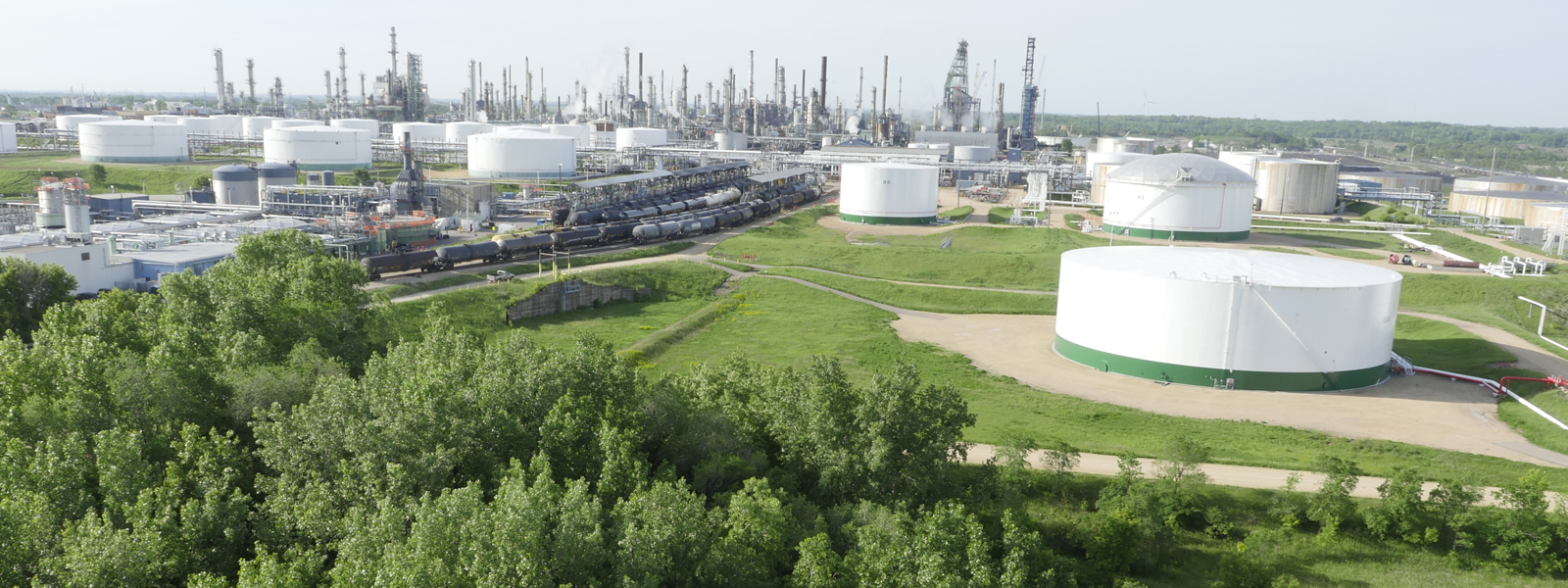
November 12, 2012
Employees at Flint Hills Resources, LLC’s Flint Hills Resources Pine Bend received international recognition for their contributions to wildlife habitat conservation at the Wildlife Habitat Council’s (WHC) 24th Annual Symposium, Working for a Greener World. Flint Hills Resources, LLC demonstrates its commitment to environmental stewardship and increasing native biodiversity by achieving Wildlife at WorkSM recertification at Flint Hills Resources Pine Bend.
“Wildlife Habitat Council members continue to raise the bar for conservation success. We connect corporations, conservation and community to create habitat and increase biodiversity. The projects being honored today are the best examples of our model at work,” said Margaret O’Gorman, WHC President. “Congratulations to Flint Hills Resources, LLC for its successful efforts towards habitat enhancement and biodiversity.”
The Flint Hills Resources LP Pine Bend facility is located near the banks of the Mississippi River and adjacent to the Pine Bend Bluffs Natural Area, one of the largest and most diverse native ecosystems left in the seven-county metro region. The site lies on 4,000 acres, 500 of which are actively managed for wildlife habitat. The site's wildlife team consists of approximately 75 employees and numerous volunteers from the surrounding community.
The team has long partnered with the Minnesota Department of Natural Resources, Friends of the Mississippi River (FMR) and Great River Greening (GRG) in its efforts to restore sand gravel prairie along the bluffs of the southern portion of the property. These rare prairie remnants over time became infested with exotic, invasive species such as cheatgrass. FMR and GRG mapped cheatgrass locations with GPS survey and conducted a research project in an effort to determine the most effective method of controlling cheatgrass. The partners continue to study cheatgrass test plots and share the findings with other natural resource professionals. Volunteers periodically supplement the sand gravel prairie remnants by removing invasive species and planting native grasses and forbs propagated from locally-collected and germinated seeds through a horticultural club connected with a local technical college.
Near a newly constructed administrative building, the wildlife team planted a five-acre native prairie, and constructed several ponds and wetlands to eliminate water runoff from the newly constructed area. Although these water features were designed for stormwater management, the team planted native wetland vegetation around the ponds and wetlands, and manages them to benefit waterfowl. The wildlife team has also continued to restore portions of the property to its original oak savanna habitat.
Restoration began in 2000, with removal of dense stands of invasive buckthorn from the understory. Oak trees were thinned out and the understory planted with warm season grasses and forbs. Bare patches were later reseeded with forbs and grasses, and acorns and oak seedlings were planted to encourage the transition back to oak savannah. Oak trees are also regularly monitored and treated for certain diseases. The team also uses prescribed burns to manage the oak savanna, with the most recent burn conducted in 2012.
The site's eastern bluebird nest box program is very active, as well. Many volunteers participate in monitoring and maintaining the nest boxes. Weekly monitoring efforts revealed that the nest boxes are regularly used by eastern bluebirds as well as by other native cavity nesters like tree swallows and house wrens. Monitoring data is collected and submitted to the Minnesota Bluebird Recovery Program. Employees also installed two chimney swift nesting structures in the Pine Bend Bluffs Natural Area in 2011.
Control of exotic, invasive species is an ongoing priority of the wildlife team and its partners. In addition to continuing buckthorn and cheatgrass removal, the site actively works to eliminate species such as spotted knapweed, garlic mustard, Russian thistle, Canada thistle, wild parsnip and common mullein. Vegetation monitoring and control is accomplished through a partnership with Friends of the Mississippi and Great River Greening. A group of volunteers from Dakota County Technical College assisted with the site's invasive species control efforts by conducting buckthorn removal in the bluff area. In addition to controlling non-native invasive plants, the site also controls feral cat populations in the area by capturing, neutering or spaying, and then releasing or adopting out feral cats each year.
Flint Hills Resources Pine Bend was one of 270 sites recognized at the 2012 Symposium for a Wildlife at WorkSM program. In addition, 57 Corporate Lands for LearningSM (CLL) programs were recognized, reaching thousands of learners from schools and scout groups to master gardeners and university researchers. Since 1990, WHC has certified 665 Wildlife at Work and 147 CLL programs worldwide. The certification program recognizes outstanding wildlife habitat management and environmental education efforts at corporate sites, and offers third-party validation of the benefits of such programs. Certification requirements are strict and require that sites apply for periodic renewal.
About The Wildlife Habitat Council
The Wildlife Habitat Council (WHC) is a nonprofit, non-lobbying organization dedicated to increasing the quality and amount of wildlife habitat on corporate, private and public lands. WHC devotes its resources to building partnerships with corporations and conservation groups to create solutions that balance the demands of economic growth with the requirements of a healthy, biodiverse and sustainable environment. WHC-assisted wildlife habitat and conservation education programs are found in 43 states, the District of Columbia and nine other countries. To learn more, visit www.wildlifehc.org.